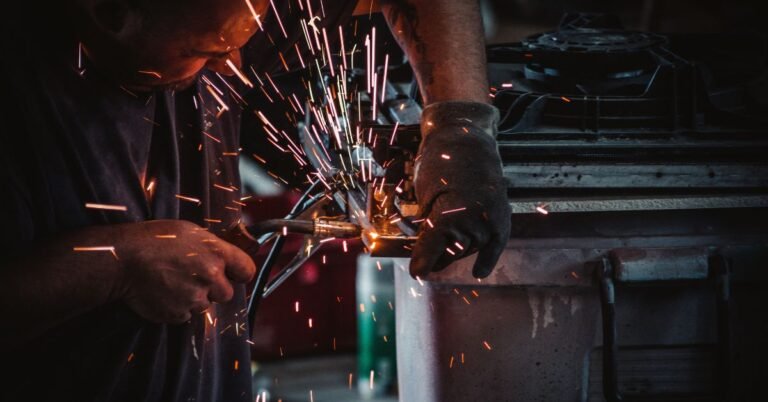Navigating the Complexity of Welding Dissimilar Metals
Welding is an intricate dance of heat, precision, and material interaction. Yet, when it comes to joining dissimilar metals, the choreography becomes even more intricate. The art of welding dissimilar materials requires a deep understanding of metallurgy, properties, and techniques. In this article, we’ll delve into the world of welding dissimilar metals, exploring the factors that come into play and the methods welders employ to create robust and enduring connections between diverse materials.
Understanding Dissimilar Metals:
Dissimilar metals possess unique properties, with “nobility” being a crucial characteristic that determines their corrosion resistance. Noble metals, like gold and silver, exhibit strong corrosion resistance due to their ability to hold onto electrons. When two dissimilar metals encounter each other, the nobler metal tends to strip electrons from the less noble one. For instance, stainless steel is nobler than aluminum and can corrode the latter over time if an electrolyte like water is present. This understanding of nobility aids welders in predicting how different metals will interact and which ones are compatible.
Why Weld Dissimilar Metals?
Welding different metals together might seem counterintuitive due to potential corrosion and weakened joins. However, this practice often holds distinct advantages. Combining various metals within a single workpiece can leverage the strengths of each material, allowing for tailored properties in different parts. Moreover, cost-effectiveness plays a role; using an expensive metal like aluminum sparingly and welding it to more affordable steel can optimize the balance between performance and budget.
Factors to Consider When Welding Dissimilar Metals:
- Fusion Welds: Choosing the right welding process is critical for successful dissimilar metal joins. Fusion welding, including Metal Inert Gas (MIG) and Tungsten Inert Gas (TIG) welding, is a favored choice. Proper filler selection is crucial to match the strength of the weaker metal, avoiding potential cracking and failure.
- Metal Melting Points: Awareness of melting points is paramount, as metals melt at vastly different temperatures. Adapting techniques to reach a temperature sufficient for both metals to melt and fuse is essential.
- Thermal Expansion: Different metals exhibit varied rates of expansion and contraction when exposed to heat. Joining metals with vastly different expansion rates can lead to residual stress, particularly in the intermetallic zone where metals blend. Skillful techniques aim to minimize this stress.
- End-Use Environment: The intended application environment greatly affects the long-term durability of the finished workpiece. Factors like corrosion resistance, protective coatings, and galvanization must be considered when selecting metals for the project.
- Incompatible Metals: Some metal combinations, such as titanium and steel, aluminum and copper, or aluminum and stainless steel, require alternative welding methods like laser welding, diffusion bonding, or friction welding due to their response to fusion welding.
Conclusion:
Welding dissimilar metals is a craft that demands precision, knowledge, and skill. The symphony of metallurgy, technique, and understanding comes together to create strong, enduring bonds between materials that, at first glance, might seem incompatible. From selecting the right process and filler to factoring in melting points and environmental considerations, welders weave a narrative of artistry and science to achieve remarkable results. In the intricate world of welding dissimilar metals, mastering the nuances ensures that every connection is not just a weld but a fusion of possibility and durability.







